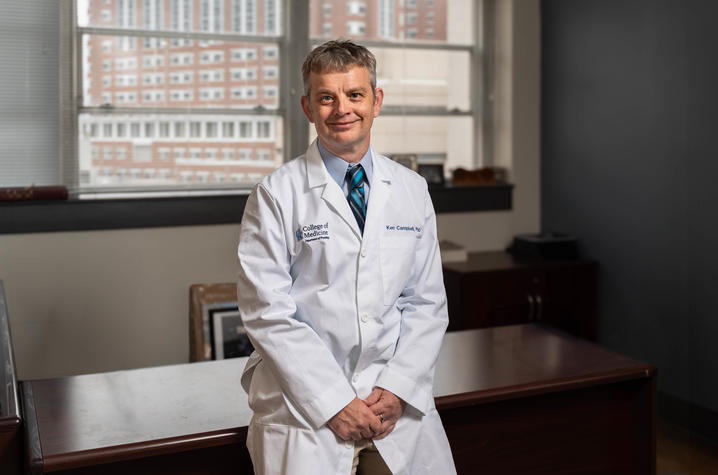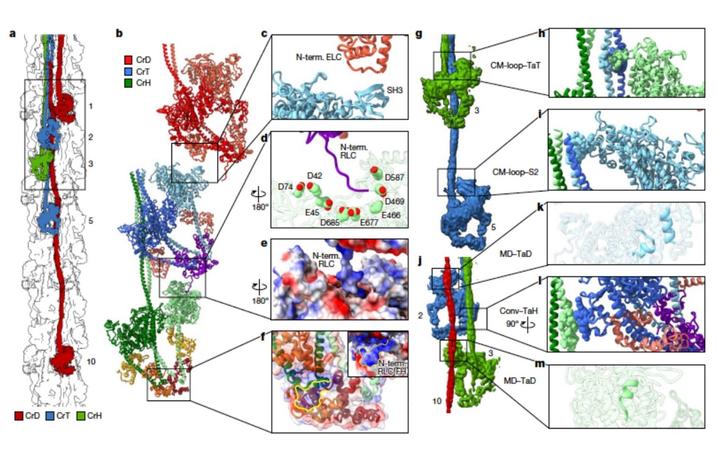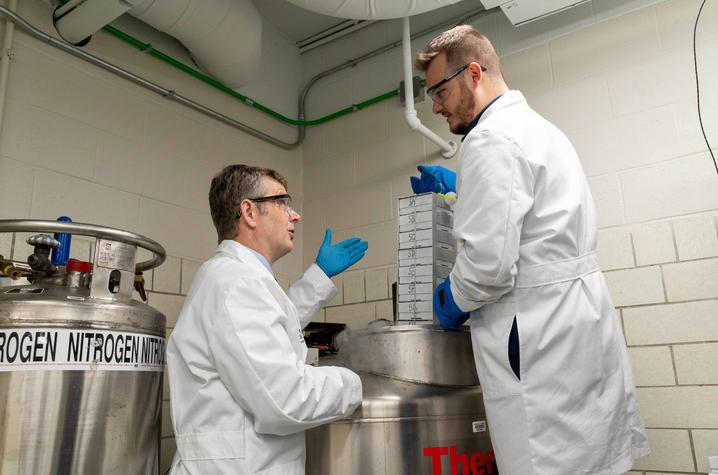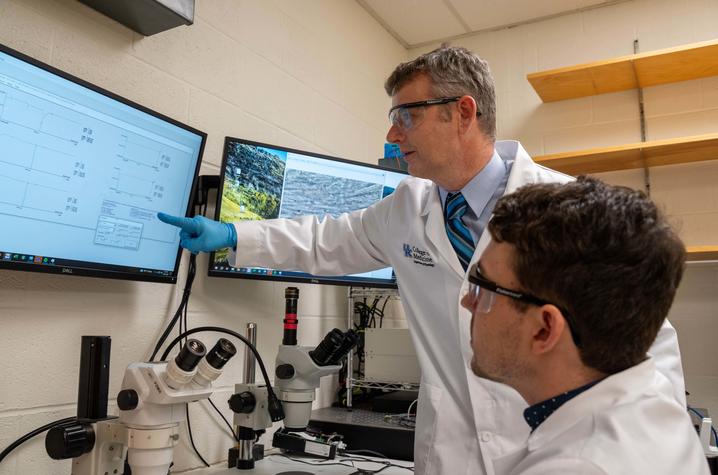UK researcher helps solve 60-year mystery inside heart, publishes in Nature
Video produced by Ben Corwin and Lindsay Travis, UK Research Communications. To view captions for this video, push play and click on the CC icon in the bottom right-hand corner of the screen. If using a mobile device, click on the "thought bubble" in the same area.
LEXINGTON, Ky. (Nov. 14, 2023) — One University of Kentucky researcher has helped solve a 60-year-old mystery about one of the body’s most vital organs: The heart.
Kenneth S. Campbell, Ph.D., the director of translational research in the Division of Cardiovascular Medicine in the UK College of Medicine, helped map out an important part of the heart on a molecular level. The study titled “Cryo-EM structure of the human cardiac myosin filament” was published online in the prestigious journal Nature earlier this month.
The heart is made up of billions of cells. Each cell contains thousands of smaller structures, called sarcomeres. These are the building blocks of muscle. Within each block, are hundreds of myosin filaments. To put this microscopic level into perspective, if the heart is a continent, Campbell and fellow researchers are looking at single strands of hair.
“Each filament has roughly 2,000 molecules arranged in a really complicated structure that scientists have been trying to understand for decades,” said Campbell. “We knew quite a lot about the individual molecules and people thought the myosins could be arranged in groups of six that were called crowns, but not much beyond that.”
Campbell explained the most interesting discovery in the paper is that there are three different types of crowns. The interactions between them are shown in the second photo below.
“We think this means that heart muscle can be controlled more precisely than we had realized. We were also excited to see how myosin binding protein-C, another protein that is linked to genetic heart disease, sits within the structure. It gives us a new level of information about how the molecules are arranged in the heart,” said Campbell.
Working with researchers at the University of Massachusetts Chan Medical School, the group produced single-particle 3D reconstructions of the cardiac thick filaments. The pictures provide a new framework for interpreting structural, physiological and clinical observations.
“This study is important for discovering new drug therapies for heart disease which Kentucky desperately needs,” said Campbell. “It gives us a much better understanding of how the molecules in our hearts interact.”
Heart disease is the leading cause of death in Kentucky and puts the Commonwealth among the top 10 states with the highest death rate from the disease, according to the Centers for Disease Control and Prevention (CDC).
“We’re interested in therapies for different kinds of heart failure and myopathies, where the heart muscles don’t work very well,” said Campbell. “Our research is one of many projects underway at the university to help come up with better therapies for heart disease.”
The research team collected heart samples from the Gill Cardiovascular Biorepository, of which Campbell is the director. Samples are donated for research purposes from patients who receive cardiovascular care at UK.
“We started the Gill Cardiovascular Biorepository in 2008. With the help of a surgeon at UK HealthCare, we started collecting samples of myocardium from organ donors and from patients who were getting cardiac transplants,” said Campbell. “Now we’ve built a huge resource with roughly 15,000 samples from nearly 500 people.
“We also share these samples with research groups around the world. This study in Nature comes from one of those collaborations.”
Nature is a weekly international journal and is considered one of the most prestigious and widely respected scientific journals in the world. First published in 1869, the journal now covers a wide range of scientific disciplines and publishes original research, review articles, opinion pieces and news related to various fields of science.
“If you get a paper published in Nature, it means that scientists think that this work is important to everybody, not just people who specialize in that particular area,” said Campbell. “It’s a career highlight.”
Campbell, who holds a joint appointment in cardiovascular medicine and physiology, has taken an undergraduate degree in physics and transformed it into a career focused on helping people.
“I used to care a lot about math and molecules,” said Campbell. “But after hearing a friend who’s a cardiothoracic surgeon talk about patients, I realized I could take my scientific skills and do research that has a chance of helping people. It’s given my science purpose.
“And to the patients at UK HealthCare who’ve donated samples to us, we hope they know how much they’ve helped drive world-class research to, hopefully, help others who get sick.”
Research reported in this publication was supported by the National Heart, Lung, and Blood Institute of the National Institutes of Health under Award Numbers R01HL149164 and R01HL148785. The content is solely the responsibility of the authors and does not necessarily represent the official views of the National Institutes of Health.




UK HealthCare is the hospitals and clinics of the University of Kentucky. But it is so much more. It is more than 10,000 dedicated health care professionals committed to providing advanced subspecialty care for the most critically injured and ill patients from the Commonwealth and beyond. It also is the home of the state’s only National Cancer Institute (NCI)-designated Comprehensive Cancer Center, a Level IV Neonatal Intensive Care Unit that cares for the tiniest and sickest newborns and the region’s only Level 1 trauma center.
As an academic research institution, we are continuously pursuing the next generation of cures, treatments, protocols and policies. Our discoveries have the potential to change what’s medically possible within our lifetimes. Our educators and thought leaders are transforming the health care landscape as our six health professions colleges teach the next generation of doctors, nurses, pharmacists and other health care professionals, spreading the highest standards of care. UK HealthCare is the power of advanced medicine committed to creating a healthier Kentucky, now and for generations to come.




